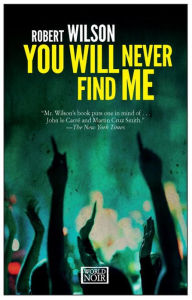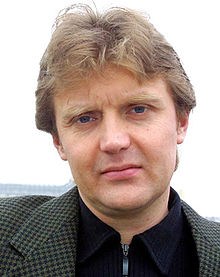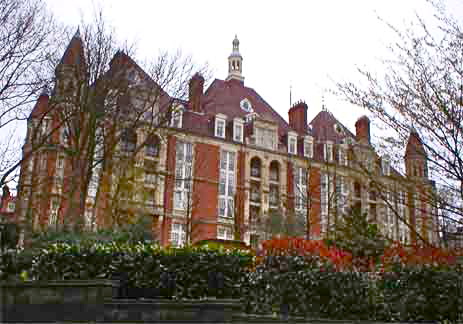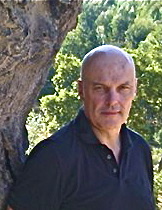“A literary agent asked me to write a non-fiction book about the Tereshchenko case. I said I wouldn’t do it but I’d be happy to write fiction. I’ve always admired John le Carre. The agent wasn’t interested. He said there were three places in the world where he thought crime fiction didn’t work: Africa, South America and Russia. When I asked him why, he said that they were all too surreal; nobody would be able to suspend their disbelief.”–Andrei Bobkov, father of Sasha
 Reading this thriller is like reading an action film – an experience filled with non-stop drama, several different plot lines, quick changes of scene, numerous exotic settings, characters ranging from sick sociopaths to innocent children, and enough torture and gore to make one wretch. Opening with the point of view of Amy Boxer, the eighteen-year-old daughter of former investigator Charles Boxer and Detective Inspector Mercy Danquah, British author Robert Wilson brings the reader directly into the action. Amy, anxious to escape the boredom of her life and her parents’ expectations, has completely cleared all her belongings from her mother’s London apartment, a few things at a time, and has come up with what she regards as a fool-proof plan to run away and not be caught. She must be particularly careful to make no missteps. Her mother Mercy works with the Specialist Crime Directorate – the kidnap unit – and Amy not only wants to escape her life and vanish but, even more importantly, to embarrass her parents in the process. Her father, Charles Boxer, long separated from Mercy, has also specialized in kidnapping cases and now runs a charitable foundation called LOST, which finds missing people after the police have given up. Charles’s own father had run away from Esme, his mother, leaving behind a note saying, “You will never find me,” exactly the message that Amy has left her own parents in her letter to them.
Reading this thriller is like reading an action film – an experience filled with non-stop drama, several different plot lines, quick changes of scene, numerous exotic settings, characters ranging from sick sociopaths to innocent children, and enough torture and gore to make one wretch. Opening with the point of view of Amy Boxer, the eighteen-year-old daughter of former investigator Charles Boxer and Detective Inspector Mercy Danquah, British author Robert Wilson brings the reader directly into the action. Amy, anxious to escape the boredom of her life and her parents’ expectations, has completely cleared all her belongings from her mother’s London apartment, a few things at a time, and has come up with what she regards as a fool-proof plan to run away and not be caught. She must be particularly careful to make no missteps. Her mother Mercy works with the Specialist Crime Directorate – the kidnap unit – and Amy not only wants to escape her life and vanish but, even more importantly, to embarrass her parents in the process. Her father, Charles Boxer, long separated from Mercy, has also specialized in kidnapping cases and now runs a charitable foundation called LOST, which finds missing people after the police have given up. Charles’s own father had run away from Esme, his mother, leaving behind a note saying, “You will never find me,” exactly the message that Amy has left her own parents in her letter to them.
As Amy’s parents relive everything they have done wrong in trying to bring her up, the reader develops a certain sympathy for them, but at the same time their long-time disconnection with Amy and their preoccupation with their jobs seem to have made Amy’s own life both unfocused and undisciplined, a recipe for disaster which is hard to believe of two professionals who specialize in missing children and runaways. Amy’s acting out goes way beyond “ordinary” behavior for troubled teens, involving people and activities that directly challenge the law and the police, yet she has never received the attention she has been crying out for from her parents, who have specialized in adolescent behaviors just like hers. “She doesn’t care what people think of her,” her father comments, with a sad kind of admiration. “That takes strength of character. Most people want to be liked. We admire those who don’t give a damn.” A few pages later, Amy is in Spain, showing off at a nightclub and dancing with El Osito, “Little Bear,” a drug dealer who wants to expand his territory in London.
All of this and much more happens in just the first thirty pages. The remaining four hundred pages explore several other plot lines and lead to a character list of almost fifty people, most of them stereotypes. A sweet ten-year-old Russian boy, Sasha Bobkov, who has been caretaker for his alcoholic mother, is suddenly kidnapped with the aid of another boy with whom he has been doing football tricks near his apartment in London. Blindfolded and isolated, Sasha is desperate, as is his father Andrei Bobkov, who eventually receives a message demanding a huge ransom. Bobkov was a friend of Alex Tereshchenko, a Russian who was poisoned by polonium in London and died a horrible death, a plot line obviously modeled on the real case of Alexander Litvinenko and inserted here for no apparent reason. Since Bobkov has had intimate dealings with the FSB, the successor to the KGB, he knows just how far the Russians will go to get what they want, as the story line veers into the machinations of the Russian spy apparatus in London. Meanwhile, El Osito’s plans in Spain to bypass the Mexican drug cartel and deal directly with the Colombians become even more complex, while Amy’s frantic parents continue their search.

Alexander Litvinenko, killed by polonium poisoning after escaping to the UK, where he worked actively for MI5 and MI6. Alex Tereshchenko is modeled after him.
I was in the mood for a quick-paced action novel/thriller, and You Will Never Find Me certainly met that need, but I had hoped that the novel would be more tightly organized than it was, with greater attention paid to motivations and more analysis of the alternatives which the characters had open to them. Here their actions seemed pre-programmed to meet the needs of plot, rather than as direct outcomes of their personalities and backgrounds. While there is some development to the major characters, these characters sometimes get lost in the shuffle among dozens of undeveloped peripheral characters so similar that keeping them straight became problematic – I eventually had to create a character list so I could keep track. The novel sprawls, moving quickly in different directions, seemingly at random, and the large number of plots creates confusion, rather than levels of complication.

The Old Consumption Hospital, now an elegant apartment building, where Amy lived with her grandmother Esme for the last week before her disappearance. Photo by Lindy Newman
Somehow these seemingly unrelated plot lines do come together in a conclusion which depends largely on surprise and coincidence, rather than on carefully created interconnections. The action, sometimes bloody and shockingly vicious, never wanes, however, and the scenes change every two or three pages, keeping the reader energized and involved, though sometimes flipping pages to avoid getting lost. The final scene, a denouement which takes place six months after the last big action scene, is disappointingly sentimental and clichéd. In one of the great ironies, a literary agent tells Bobkov (see opening quotation) that publishing crime fiction in Africa, South America and Russia didn’t work because “they were all too surreal; nobody would be able to suspend their disbelief.” I had similar problems with this novel, set in London and Spain.
Photos, in order: The author’s photo appears on https://www.hachette.com.au
Barajas Airport, Madrid, designed by Richard Rogers, is Amy’s destination upon first leaving home. https://kirinrin.wordpress.com/
The photo of Alexander Litvinenko is from Wikipedia: https://en.wikipedia.org
The Old Consumption Hospital, now converted into very elegant apartments, was home to Esme, Amy’s grandmother, with whom Amy was staying in the last week before she left home. Photo by Lindy Newman. http://thevirtualtourofhampstead.co.uk
ARC: Europa


